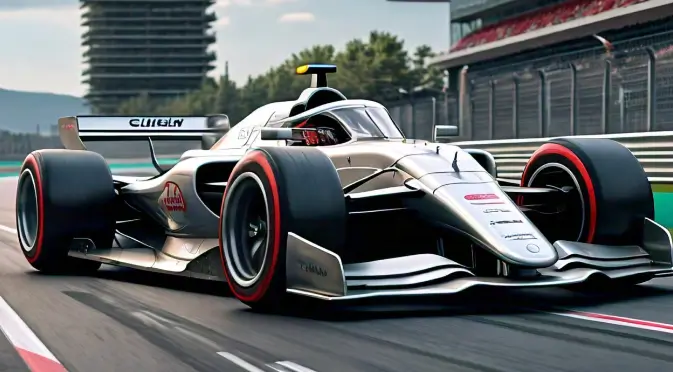Traveling through the Fast and Furious: Exploring the untold story of F1
Formula 1 (F1) is one of the world's highest-level and most popular motorsport events. This event attracts hundreds of millions of viewers worldwide, with a series of races forming the season each year, where drivers and teams compete. But how much do you know about what it takes to become an F1 race driver?

High Entry Barrier
To become an F1 driver, one must first possess exceptional driving talent. Like other sports, talent determines an athlete's starting point. However, talent is not the sole requirement. The high cost of motorsport makes family background and financial capability crucial factors for entering this field successfully. From karting to F3, F2, and finally F1, each step of advancement requires substantial financial support. According to statistics, the cost for a driver to progress from karting to F1 is at least €10 million.
Stringent Physical Fitness Requirements
F1 racing demands extremely high physical fitness from drivers. During races, drivers experience centrifugal forces of up to 5G while maintaining stable performance in high-temperature and high-humidity environments. This necessitates excellent strength, endurance, and reaction speed from the drivers. To meet these requirements, F1 drivers undergo rigorous physical training, including aerobic exercises, strength training, flexibility training, etc. Additionally, they must control their diet and maintain good sleeping habits to ensure optimal performance during races.
Mental Toughness Test
With the high risks involved in motorsport, drivers must deal with various sudden situations such as tire blowouts or brake failures while driving at high speeds. This requires drivers to possess strong mental resilience to remain calm in tense and dangerous situations. Furthermore, the fluctuation of results in motorsport is significant, requiring drivers to quickly adjust their mindset in the face of failure and setbacks to meet the challenges of the next race.
Continuous Technological Advancement
F1 racing is a high-tech sport, with rapid updates and advancements in racing technology. This requires drivers to continually learn new knowledge and master new skills to adapt to changes in the performance of racing cars. Moreover, drivers need to work closely with engineers, providing valuable feedback for car adjustments to improve race performance.
Intense Competitive Pressure
F1 racing is a fiercely competitive sport, where the difference between drivers is often minuscule. In this global competition among top drivers, each driver strives to stand out. However, the harsh reality of motorsport is that there can only be one champion. In this high-pressure environment, drivers need to constantly challenge themselves and push beyond their limits to establish themselves on the racetrack.

Therefore, the reason why there are only 20-23 F1 race drivers worldwide is that this sport demands not only effort and sweat but also the ability to maintain a consistent lifestyle day in and day out for years. Take Max Verstappen, who topped the scoreboard in the recently concluded F1 Chinese Grand Prix, for example. It took him nine years from karting to becoming an F1 race driver, despite being considered a talented driver and the youngest F1 race driver. Even for a genius, there are no shortcuts. It is for this reason that the scarcity of F1 drivers is so high.
For more information on F1 events, please download F1 TV


I love sharing funny Apps or games so as to add joy in your life or enhance your productivity. My goal is to provide clear, actionable insights that make understanding Google Play trends easier and empower creators to succeed in a competitive market.
 More Hot Topics
More Hot Topics
 More Hot Topics
More Hot Topics
-
 The long-awaited Black Myth Wukong will be available for download soon
Black Myth Wukong Release date Game Science Steam wishlists Pre-order Soulslike Chinese mythology Journey to the West Action RPG 2024 release GamesAug 15, 2024
The long-awaited Black Myth Wukong will be available for download soon
Black Myth Wukong Release date Game Science Steam wishlists Pre-order Soulslike Chinese mythology Journey to the West Action RPG 2024 release GamesAug 15, 2024 -
 ChatGPT's Money-Making Secret: Predicting the UEFA Euro Quarterfinals
ChatGPT UEFA Euro Quarterfinals Spain Germany Portugal France FootballJul 5, 2024
ChatGPT's Money-Making Secret: Predicting the UEFA Euro Quarterfinals
ChatGPT UEFA Euro Quarterfinals Spain Germany Portugal France FootballJul 5, 2024 -
 Stars & Stripes Savings: Top Memorial Day Sales You Don't Want to Miss
Memorial Day sales Memorial Day weekend getaways on a budget Memorial Day historyMay 28, 2024
Stars & Stripes Savings: Top Memorial Day Sales You Don't Want to Miss
Memorial Day sales Memorial Day weekend getaways on a budget Memorial Day historyMay 28, 2024

 Share
Share